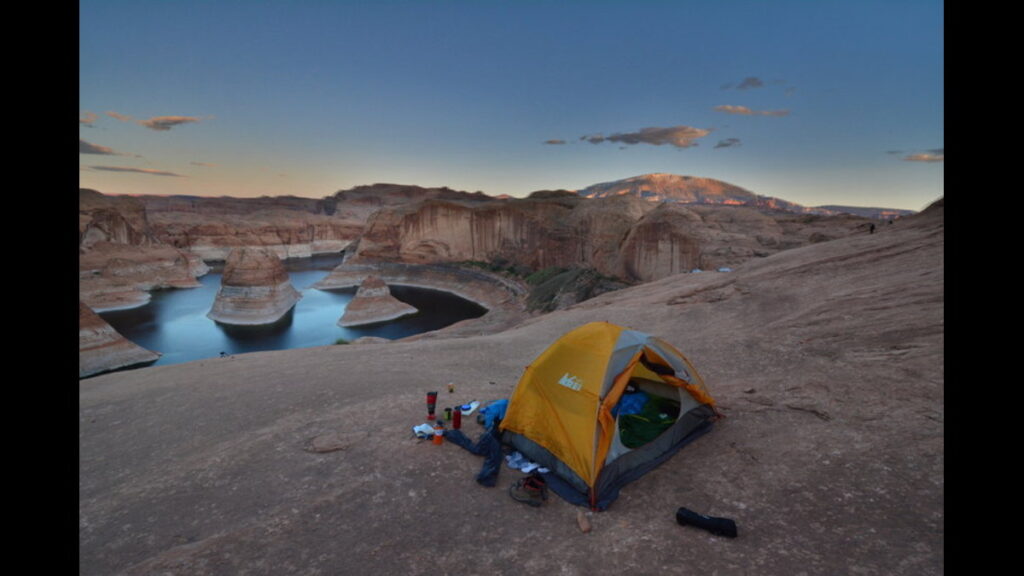5. How to Navigate the Treacherous Terrain of Reflection Canyon

Table of Contents
The American Southwest is home to some of the most breathtaking landscapes in the world. Among the iconic destinations like the Grand Canyon and Zion National Park, lies a lesser-known but equally captivating natural wonder: Reflection Canyon. This remote and surreal canyon, located within the boundaries of Glen Canyon National Recreation Area, offers an otherworldly experience for adventurers and photographers alike. In this comprehensive guide, we’ll delve into everything you need to know about visiting Reflection Canyon, from its stunning scenery and challenging access to the best times to visit and tips for capturing its beauty on camera.
The Allure of Reflection Canyon
Reflection Canyon is not your typical tourist destination. Unlike the well-trodden paths of more famous canyons, Reflection Canyon remains largely untouched and wild, offering a sense of solitude and raw natural beauty that is hard to find elsewhere. Its strikingly curvaceous and colorful formations, enhanced by the fluctuating water levels of Lake Powell, create a mesmerizing landscape that seems almost too beautiful to be real.
The canyon’s name is derived from the stunning reflections seen in its waters, particularly when the lake levels are high enough to flood the canyon. These reflections, combined with the intricate rock formations, create a mirror-like effect that is a dream for photographers. The vivid reds, oranges, and yellows of the sandstone contrast beautifully with the deep blues of the water, making Reflection Canyon a perfect example of nature’s artistry.
The Geological Wonder
like much of the surrounding area, is carved from Navajo Sandstone. This type of rock, which dates back to the Jurassic period, is known for its smooth, sculpted appearance and its ability to reflect light in mesmerizing ways. Over millions of years, wind and water erosion have shaped the sandstone into the stunning formations we see today.
One of the most fascinating aspects of Reflection Canyon is how it changes with the seasons and water levels. During times of high water, the canyon is partially submerged, creating those famous reflections. In contrast, when water levels are low, the canyon reveals more of its intricate rock structures, offering a different but equally captivating view.
How to Get to Reflection Canyon
Visiting is not for the faint of heart. Its remote location means that getting there requires careful planning and a willingness to tackle some challenging terrain. The adventure begins at the trailhead near the Escalante River, accessible from Hole-in-the-Rock Road. This unpaved road can be rough and is best navigated with a high-clearance, four-wheel-drive vehicle.
The Hike

The hike to Reflection Canyon is approximately 20 miles round trip and is considered strenuous. There is no official trail, so hikers must rely on GPS, maps, and navigation skills to reach the destination. The route traverses rugged desert terrain, including slickrock, sandy washes, and rocky outcrops. Hikers should be prepared for a challenging journey, carrying plenty of water, food, and camping gear if planning to stay overnight.
Best Time to Visit Reflection Canyon
The best time to visit Reflection Canyon depends largely on what you hope to see and your tolerance for different weather conditions. Generally, spring (March to May) and fall (September to November) are considered the best times to visit. During these seasons, temperatures are more moderate, making the hike more manageable.
Water Levels
Water levels in Lake Powell, and subsequently Reflection Canyon, can vary significantly throughout the year. To see the canyon at its most reflective, visit during times when Lake Powell’s water levels are high. However, even during low water periods, the exposed rock formations are incredibly beautiful and worth the trek.
Avoiding Crowds
While Reflection Canyon is less visited than other Southwest destinations, it has been gaining popularity. To experience the canyon in solitude, consider visiting during weekdays or the shoulder seasons (early spring and late fall). This will increase your chances of having the canyon mostly to yourself, enhancing the sense of adventure and tranquility.
Drone Photography
If you have a drone and the appropriate permissions, aerial photography can provide a unique perspective of Reflection Canyon. From above, the intricate patterns and colors of the canyon are even more pronounced. Always follow local regulations and guidelines when flying a drone in protected areas.
Reflection Canyon is a testament to the incredible beauty and diversity of the American Southwest. Its remote location and challenging access make it a destination for the adventurous and those seeking a true wilderness experience. The reward for your effort is a landscape of unparalleled beauty, where the interplay of light, water, and rock creates a scene that is nothing short of magical.
Conclusion: The Unforgettable Experience of Reflection Canyon
Whether you’re a seasoned hiker, an avid photographer, or simply someone who appreciates the wonders of nature, Reflection Canyon is a must-see gem that will leave a lasting impression. Plan your trip carefully, respect the environment, and prepare for an adventure that you’ll remember for a lifetime.




